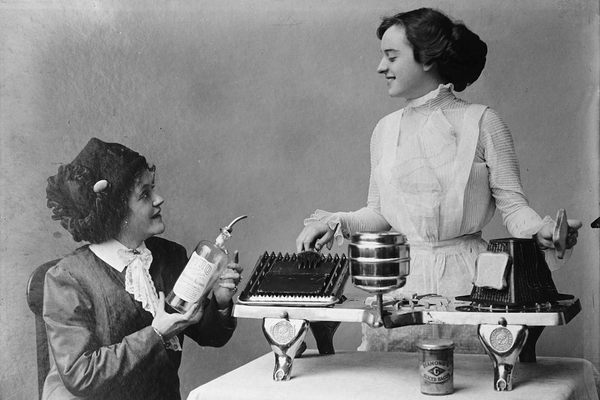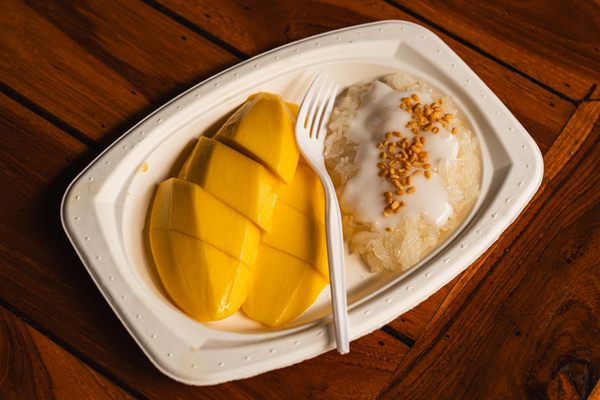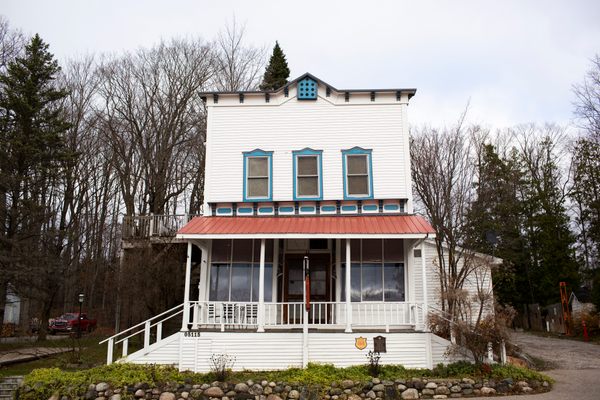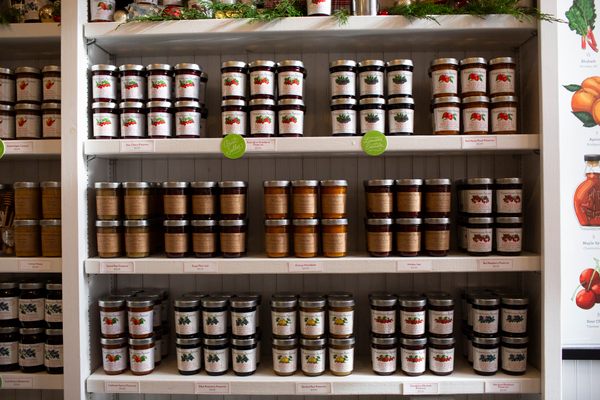An Afternoon With MIT’s Most Important Invention
The technology alerts users when there are leftovers in the building.

Two graduate students burned by Foodcam. (Photo: Atlas Obscura)

The MIT Media Lab is a much-vaunted, glass-walled bastion of technological progress. At any given moment, the luminaries inside might be presenting the future to a select group of investors, literally reinventing the wheel, or warming up a team of opera-singing robots.
But that kind of innovation is sporadic at best, and innovators need daily nourishment, in every sense of the word. It may go unremarked upon in fancy slide decks or tours touting the lab accomplishments, but make no mistake: The beating heart of the Media Lab’s creative universe lies in a small corner of the third floor, on about a foot of average-looking countertop flanked by a coffeemaker and a microwave.
This is the domain of Foodcam.
By media lab standards, Foodcam is a simple technology—the whole thing is made up of a camera, a button, and some wires. Put half a pizza or a box of cookies on the counter, push the button, and a photo of the leftovers is beamed to the waiting screens of hungry people in the know. It’s so easy to use, it requires no instructions beyond a warning sign (”don’t place anything here unless you want to share it with the community!”) and a sticker emblazoned with FOODCAM.

The cam in action. (Photo: Atlas Obscura)
But like so many vital innovations, Foodcam’s simplicity only adds to its power. On a recent Tuesday, a press of the button sent students pouring out of stairwells yelling, “Chips! Chips!” Hearing that a tagalong wasn’t on the Foodcam email list, his friend exclaimed, “You’re not!?” At least one devotee has called it “the most important and revolutionary invention to come out of the Media Lab.” (Hyperbole? Perhaps. But a sugar rush can do that to you.)
Foodcam was born in the late 1990s, the brainchild of a few Media Lab employees looking to find a use for a cool, then-new Axis 200+ webcam. Inspired by hunger and a lab-wide leftovers problem, they positioned the camera over a centrally located kitchen counter and began a perpetual livestream. Soon after, they added a button that, when pressed, sent a picture of the counter’s contents to everyone on a particular email list. It worked like magic. “You’d put it there, you’d hit the button, and the food would disappear,” says Jon Ferguson, a member of the original Foodcam team.
It has since evolved with the times. Early on, it announced its bounty with a robotic bell and a soundboard that yelled “COME AND GET IT.” When the recession hit in the early 2000s, drying up the excess food supply, Foodcam took a brief hiatus (“It was just kind of depressing, so we took it down,” remembers Will Glesnes, also on the original team). After a couple of years, it returned; in March of 2008, it joined Twitter. Last year, it got its own channel on the Lab’s team-wide Slack account.
COME AND GET IT! pic.twitter.com/Q4AYn5Uwr6
— medialabfoodcam (@medialabfoodcam) April 1, 2016
It has also developed its own list of rituals and hacks. Students flooding up and down from other floors spoke of calculating the most efficient routes to the counter. Rumor has it that certain competitive eaters figured out how to get notified whenever there’s motion on the livestream—before the button is even pressed—in order to get a head start. Graduate student Maya Wagoner set up her phone so that it texts her whenever food is there and she’s close enough to sprint. “In the past, it’s taken me years to trace the patterns of a city to find out where and when free food is available,” she says. “Now I just have to run really fast and be in this building at all times.”
Of course, as Wagoner and others attest, this bounty is available only to those already in the network—you can’t see the livestream without a Media Lab login, and there’s no point in keeping track of the Twitter unless you’re in the building. This exclusivity is part of the point. Foodcam is more than just a renewable fuel cell: Progress requires calories, sure, but it also requires leaving your desk every once in a while. At Foodcam, you can literally rub elbows with people from different labs, different generations, and different countries, with the only necessary commonality being an immediate desire for a burrito.
Suranga Nanayakkara, a former Media Lab post-doc, so loved Foodcam’s equalizing power that he brought the idea back with him to Singapore University. “It provides a way for impromptu introductions and informal social interactions,” he says.
That sense of connection can persist even across physical space. Ferguson left the Lab last year and is now working across the river at a nearby startup, but he misses his invention. “I stayed subscribed to it for a long time to see the traffic and feel connected,” he says. (Eventually, overwhelmed by emails and nostalgia, he unsubscribed.)
Foodcam also allows for a deep dive into student food culture—a brief scroll through its Twitter timeline reveals lonely styrofoam containers of tomato soup, bagged lunches with green apples peeking out, and an infinity of bagels. Plus, true to its setting, it lends itself to experiments: Brief, less-than-rigorous analysis reveals that Bertucci’s, placed out in the late afternoon, disappears within seconds, and that chocolate Dunkin Donuts go faster than plain.
Both, true to their purpose, incite big dreams. “I wish Foodcam were everywhere,” says Wagoner after a bite of a glazed donut. She then muses: “It seems scalable.” In this way, the future is born.
Gastro Obscura covers the world’s most wondrous food and drink.
Sign up for our regular newsletter.



























Follow us on Twitter to get the latest on the world's hidden wonders.
Like us on Facebook to get the latest on the world's hidden wonders.
Follow us on Twitter Like us on Facebook